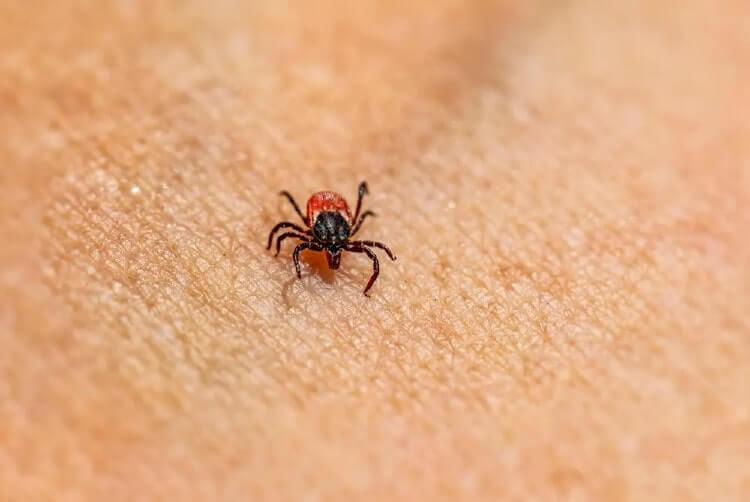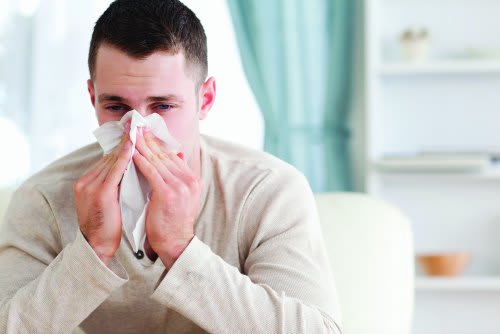By Asha Shah, MD, MS
Think twice before ignoring that poppyseed-sized speck on your arm. It could be a tick, and its bite could make you sick.
Ticks are tiny, spider-like insects that live in the woods or areas where tall grasses or leaf piles provide shade from sun and heat. They latch onto passing people or animals and crawl around until they find a spot where they can attach and draw blood.
Ticks are most active from spring through fall. In Connecticut, we usually start to see a growing number of tick bites starting around June and lasting until the end of summer and even into September.
If you spend time in the woods or grassy areas or have a dog or other pet that spends time there, then you're a tick bite target. But you may not know that you've been bitten because these bites are usually painless. That's why it's important to recognize the signs of a possible bite, and the symptoms of a tick-borne disease
We see a fair number of these diseases every summer. The three most common ones are Lyme disease, anaplasmosis, and babesiosis, which black-legged ticks, also known as deer ticks, carry (although not all ticks are infected). We also see ehrlichiosis, which comes from the lone star tick.
These infections typically present with flu-like symptoms, such as fever, chills, sweats, headache, body aches, loss of appetite, nausea, or fatigue about one to two weeks after the bite of an infected tick. A bite from a tick carrying the bacteria that causes Lyme-disease often leaves a trademark bullseye rash. Lyme disease may also cause severe joint pain and swelling, especially the knees and other large joints as well as conduction system abnormalities of the heart. All of these tick-borne diseases can be treated with antimicrobial therapy. If you become ill after having been bitten by a tick or in places where ticks commonly live, schedule an appointment with your healthcare provider.
Steps to prevent tick bites:
- Wear a long-sleeve shirt, long pants, and a hat to protect your scalp in heavily wooded areas.
- Wear light-colored clothing to see ticks easier.
- Tuck pants into socks and shirts into pants to prevent ticks from attaching to your skin.
- Wear gloves when gardening.
- Wash clothes in hot water to kill ticks, or tumble dry clothes on low heat for 70 minutes or high heat for 40 minutes.
- Use an over-the-counter insect repellent containing DEET.
Where to check for ticks:
Remember to check for ticks on yourself, your children, and pets when returning from tick-infested areas. Pets can get Lyme disease and pass ticks onto you or other members of your household. Look for ticks in:- All joint areas.
- The belly button.
- Behind ears and knees.
- Between the legs.
- Around the waist.
- In the hairline.
- In other skin folds.
How to remove a tick:
Removing a tick quickly reduces your chance of getting sick from a bite. Even a tick that is carrying a tick-borne disease may not have been attached long enough to infect you.If you find a tick on your body, the first thing to do is determine its size and how long it's been in place. The ticks that transmit Lyme disease are more likely to do so if they have been on your body for 36 hours or longer. A tick that looks big and engorged has probably been on your body for a while. If you find such a tick, then try to remove it, in its entirety, with a pair of tweezers and sterilize that area with an alcohol swab. Save the tick in a container so you can bring it to the health department, which will test it for various tick-borne diseases.
If you can't remove the tick in its entirety, then it's best not to try. Instead, see your physician or go to urgent care, especially if the tick is engorged or you think it's been on you for more than a day or two.
If a tick is crawling on you, then remove and dispose of it. Put it in alcohol, a sealed bag/container, wrap it tightly in tape and throw it out, or flush it down the toilet
Your doctor may prescribe a prophylactic antibiotic like doxycycline, to protect you against illness, although not everyone who finds a tick on them needs antibiotic prophylaxis. The important thing to know is that antibiotic therapy effectively treats all three tick-borne diseases with no long-term side effects either from the medication or the illnesses themselves. If you have any questions or concerns about a tick bite, tick exposure or a tick-borne disease, it's important that you reach out to your primary care physician.
About the Author
Asha Shah, MD, MS, is the director of infectious diseases at Stamford Health.Featured Expert/ Author
























